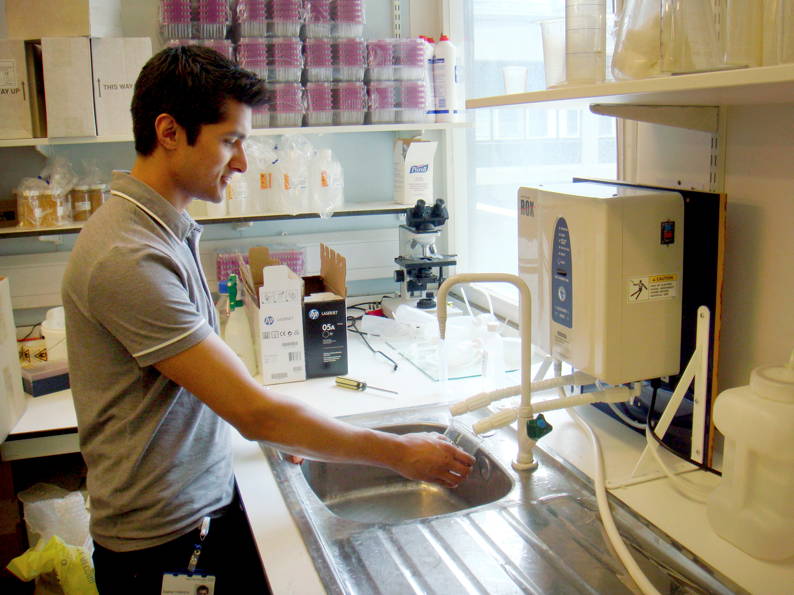 Cleanzine: your weekly cleaning and hygiene industry newsletter 18th April 2024 Issue no. 1110
Cleanzine: your weekly cleaning and hygiene industry newsletter 18th April 2024 Issue no. 1110
Your industry news - first
The original and best - for over 20 years!
We strongly recommend viewing Cleanzine full size in your web browser. Click our masthead above to visit our website version.
NHS hospital conducts trials in efficacy of electrolysed water as a sanitiser
 Since November 2011, a London NHS hospital has been researching the effectiveness of electrolysed water as a potential sanitiser, to establish conclusively that existing global research into electrolysed water stands up to scrutiny. Chlorine, the long standing 'gold standard' within the NHS, is being trialled against acidic electrolysed water (hypochlorous acid) produced by a Hoshizaki ROX-10, using recognised EN standards, including EN1040 and EN1276.
Since November 2011, a London NHS hospital has been researching the effectiveness of electrolysed water as a potential sanitiser, to establish conclusively that existing global research into electrolysed water stands up to scrutiny. Chlorine, the long standing 'gold standard' within the NHS, is being trialled against acidic electrolysed water (hypochlorous acid) produced by a Hoshizaki ROX-10, using recognised EN standards, including EN1040 and EN1276.
The EN standards are being replicated in vitro as would normally be the case for testing a sanitiser by a laboratory. However, more importantly, for the purpose of practical use, it is also being researched in vivo. Several strains of bacteria are being used including Methicillin-resistant Staphylococcus aureus (MRSA), Clostridium difficile (C. diff) and Acinetobacter baumannii, previously, susceptible to common antibiotics, but now multidrug-resistant.
This research has been sponsored by the Healthcare Infection Society, whose objectives are to advance knowledge of, foster scientific interest in and disseminate information about the prevention and control of hospital and other healthcare associated infections, to medical and allied professionals for the benefit of the public.
The full report will be published in September 2012 and will be presented at the Healthcare Infection Society Conference in November.
ROX is a completely integrated system that can have as few or as many outlets as required so that electrolysed water is always available on demand whenever and wherever required. Systems can range from a single, over-sink model, through to large plant configurations for hospitals, hotels and other large facilities.
Essentially, electrolysed water is produced by combining ordinary tap water, a mild salt solution and an electric current. A cathode and an anode in the electrolysis unit cause the water molecules to divide into positive and negative ions resulting in alkaline cleaning water and acidic sanitising water.
Alkaline water has a pH of about 11.3 (similar to a household ammonia solution) making it an efficient detergent and de-greaser.
Acidic water (hypochlorous acid) has a pH of approximately 2.7 and is a powerful sanitiser, proven effective against many pathogens, bacteria and viruses. Furthermore, its effects are rapid and, because it breaks down cell microbial walls, it prevents the development of resistant strains. Where commonly used, chlorine based sanitisers may take up to 20 minutes contact time to be effective, electrolysed water is usually effective in under 1 minute.
Electrolysed water is more effective than many sanitisers and disinfectants yet requires no storing, mixing or special disposal and presents no danger or health risk. It can be used to wash hands, clean and disinfect fruits, vegetables, meat and fish, clean and sanitise toilets, tables and wash floors.
It can then be disposed of by pouring down a sink without causing any damage to the environment.
Electrolysed water costs around 2p per litre to produce (inclusive of water, salt, electricity and equipment). Lease costs start at just £150 per month.
T: 0800 977 5687
W: www.eowater.co.uk
31st May 2012







